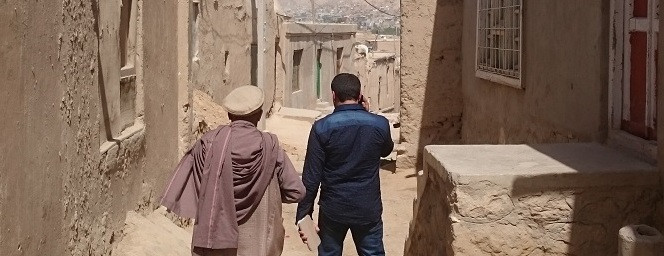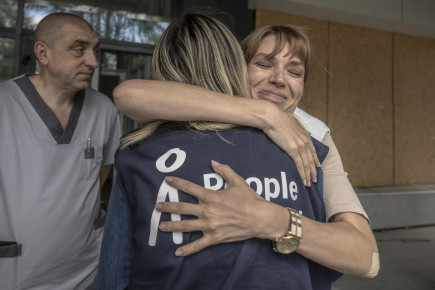Afghan Safia ran out of her house, moments later it collapsed because of an earthquake. Her father is building a new one now
Published: Jun 1, 2016 Reading time: 3 minutes Share: Share an articleSafia (7) lives with her parents and four younger siblings on a hill in the Baghlan provincial capital Pul-e-Khumri in Northern Afghanistan. When the powerful earthquake of magnitude 7.5 hit this area, her father rushed them out to the courtyard picking up Safia’s four-year old brother who was sleeping in the family bed on the way. Just moments later the front of the house collapsed and went tumbling down the hillside.

The whole family now lives in the house next door that was lent to them by their relatives. The borrowed house was also severely affected by the earthquake and the walls show signs of unrepairable damage to the foundation. “My dad leaves the light on at night in case there is another earthquake. That way we can easily run outside without getting hurt, but it is difficult to sleep with the light bulb hanging over your head,” says Safia.
Safia’s family is one of hundreds whose home was completely destroyed. People in Need with the generous support of the Common Humanitarian Fund administered by UN OCHA has helped 792 such families in the area. Safia’s family as well as others have been provided with a cash grant to help them survive the winter until they can start the reconstruction of their destroyed house in the warmer months. Safia’s father also received some practical advice on how to rebuild his home in a safer way, to make it more resilient to potential future seismic tremors.

“I don’t know how we would have managed the winter without the help of People in Need and the Common Humanitarian Fund,” Safia says. “Our bukhari (traditional Afghan heating oven) was buried under the rubble. Father bought a new oven and coal to keep our house warm. He also bought blankets for me and my brothers,” she adds.
New house arising out of ruins
Meanwhile Safia’s father has started building a new shelter further from the edge of the hill side. “We can’t continue to live in the house of my relatives and even though it kept us warm during winter, it needs to be repaired,” he says.
Safia’s father is using bricks and beams from the collapsed house. “I had to demolish what remained of our old house. My children don’t like being in there anymore and it is too close to the edge of the hill,” he explains. The entire neighbourhood is marked by the impact of the earthquake. Now that spring is here, houses are being taken down and rebuilt, but only by the families who have the resources to do so.
“Families whose houses were only partially damaged received a cash grant for repairs, an activity that is still taking place when you walk around the narrow streets,” says People in Need Emergency Programme Manager Zahra Mahsud.
“Temporary repairs were done right after the earthquake to protect the shelters from deteriorating in the harsh winter months, and to keep the cold and rain out,” says Zahra Mahsud. “Due to the rising temperatures, families are now able to reinforce those repairs with cement plastering and hopefully prepare the shelters to withstand the upcoming flood season which regularly strikes Pul-E-Khumri city,” she adds. “Right after you managed to recover from one disaster all you can do is brace yourself for the next,” concludes Zahra Mahsud.



